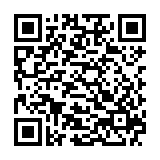The rise of artificial intelligence (AI) has transformed industries across the globe, including language services. From AI-powered translation apps to real-time interpretation tools, technology is reshaping how people communicate across languages. But what does this mean for human interpreters? Are they destined to be replaced by machines, or will they continue to play a vital role in the age of AI? Let’s dive into the evolving landscape of interpreting in the age of AI and explore what the future holds.
The Role of AI in Interpreting
What Can AI Do Today?
AI interpretation tools, such as Google Meet’s live captions or devices like Pocketalk, have made real-time translation more accessible than ever. These tools use natural language processing (NLP) and machine learning to analyze speech, convert it into text, and translate it almost instantly.
AI excels in handling straightforward, routine conversations. For example:
- Business meetings with predictable language.
- Travel-related exchanges, like asking for directions or ordering food.
- Basic customer service interactions.
The speed and convenience of these tools make them attractive for casual users and businesses looking to cut costs.
The Limitations of AI Interpreting
While AI is impressive, it’s far from perfect. It struggles with:
- Cultural Nuances: AI often misses the subtleties of cultural context, humor, or idiomatic expressions.
- Complex Conversations: High-stakes scenarios, such as legal or medical interpreting, require a level of precision and understanding that AI can’t consistently deliver.
- Emotional Intelligence: Machines can’t pick up on tone, emotion, or non-verbal cues, which are crucial in certain interpreting situations.
Why Human Interpreting in the Age of AI Still Matters
The Human Touch
Interpretation isn’t just about translating words; it’s about facilitating understanding. Human interpreters bring empathy, cultural awareness, and adaptability to their work—qualities that AI can’t replicate.
For example, in medical settings, a human interpreter can convey not just the literal meaning of a doctor’s instructions but also the sensitivity and reassurance a patient needs. Similarly, in diplomatic or legal contexts, interpreters play a critical role in navigating cultural differences and ensuring clarity.
Problem-Solving and Adaptability
Language is fluid and dynamic. People often interrupt, use slang, or change topics mid-sentence. Human interpreters can adapt on the fly, asking clarifying questions or rephrasing for better understanding. AI, on the other hand, can falter when conversations deviate from expected patterns.
Maintaining Confidentiality
In sensitive environments like courtrooms, boardrooms, or therapy sessions, confidentiality is paramount. Human interpreters adhere to strict ethical guidelines to protect privacy, while AI tools—relying on cloud-based processing—can raise concerns about data security. Exploring Cloudflare alternatives can help organizations implement secure and customizable network protection, ensuring that sensitive information remains safeguarded against potential vulnerabilities.
The Future: A Hybrid Approach
Collaboration, Not Replacement
Rather than replacing human interpreters, AI is likely to become a powerful tool that enhances their work. This hybrid approach combines the efficiency of AI with the expertise of humans, creating better outcomes for clients.
For instance:
- AI can handle routine tasks, such as transcribing and translating basic documents, freeing interpreters to focus on more complex cases.
- Interpreters can use AI tools as a support system, accessing glossaries, terminologies, and real-time suggestions during assignments.
Specialization Will Be Key
As AI takes over simple, repetitive tasks, human interpreters will increasingly specialize in areas that require high levels of skill, such as:
- Conference Interpreting: Large-scale events where precision and nuance are critical.
- Medical and Legal Interpreting: Fields where accuracy can have life-altering consequences.
- Cultural Mediation: Situations that demand deep cultural understanding to bridge gaps.
Emerging Opportunities for Human Interpreting in the Age of AI
Training AI Systems
Who better to train AI than human experts? Interpreters will play a crucial role in refining AI algorithms, providing insights into linguistic complexities, and ensuring the tools are as accurate as possible.
New Roles in Remote Interpreting
Remote interpreting, or video remote interpreting (VRI), has grown rapidly due to the pandemic. AI-powered platforms are making VRI more accessible, and human interpreters are finding new opportunities to work flexibly from anywhere in the world.
Interpreting in Niche Markets
As globalization continues, the demand for interpreting in lesser-known languages and dialects is rising. Human interpreters, with their ability to specialize, are perfectly positioned to meet these needs.
Challenges Ahead
Ethical Questions
The rise of AI in interpreting raises ethical questions, such as:
- Who is responsible for errors in AI-based interpretation?
- How can we ensure data security and privacy when using AI tools?
Bridging the Digital Divide
Not all communities have access to cutting-edge AI technologies. Human interpreters will remain essential in bridging gaps for underserved populations.
Conclusion: The Human Element in a Digital Age
The future of interpreting isn’t an either/or scenario between humans and AI. Instead, it’s a partnership where both work together to break down language barriers more effectively.
While AI can handle straightforward tasks, human interpreters bring the creativity, emotional intelligence, and cultural understanding that machines simply can’t replicate. As technology continues to evolve, interpreters who embrace AI as a tool—not a threat—will thrive in this new landscape.
In the age of AI, the human element will remain the cornerstone of effective communication. After all, language isn’t just about words; it’s about connection—and that’s something only humans can truly master.





0 Comments